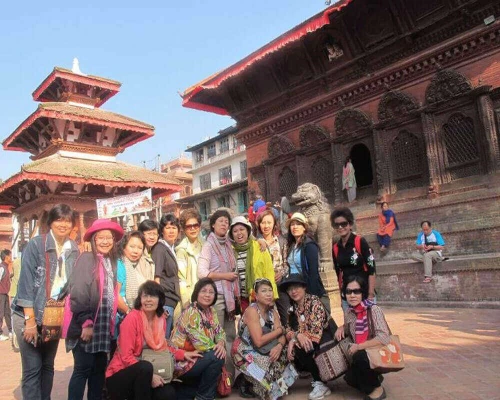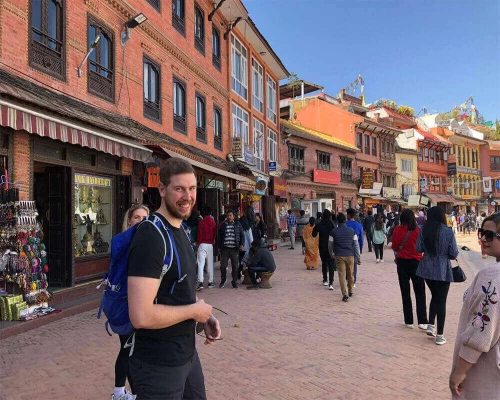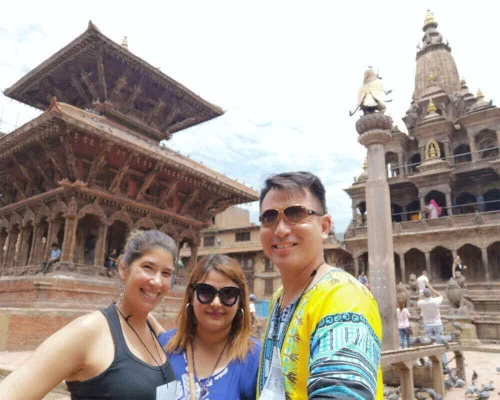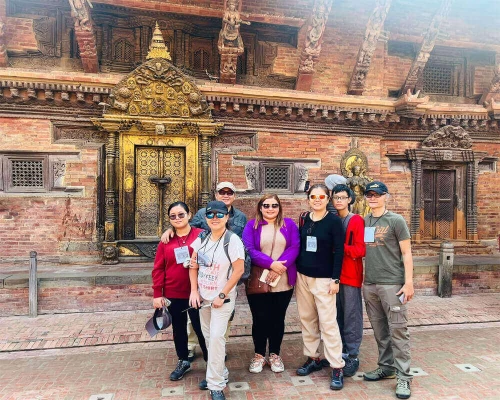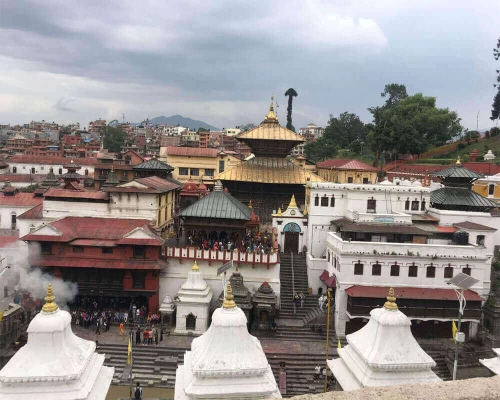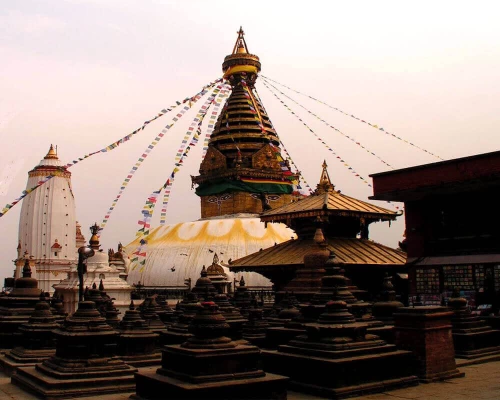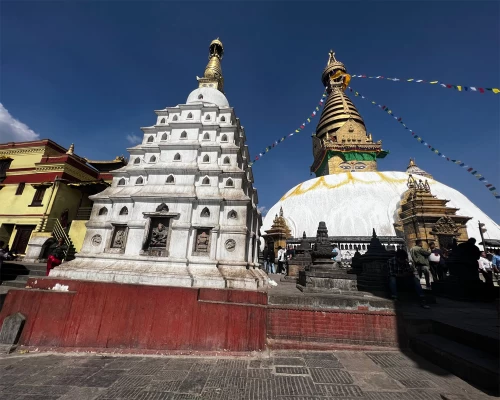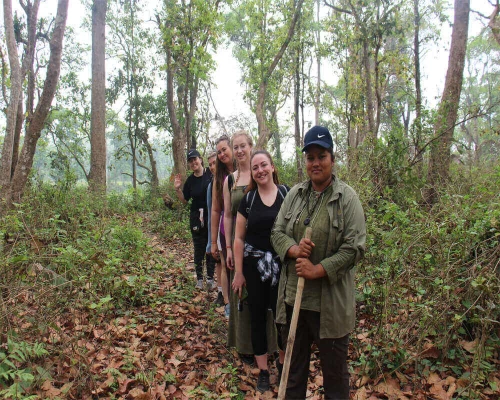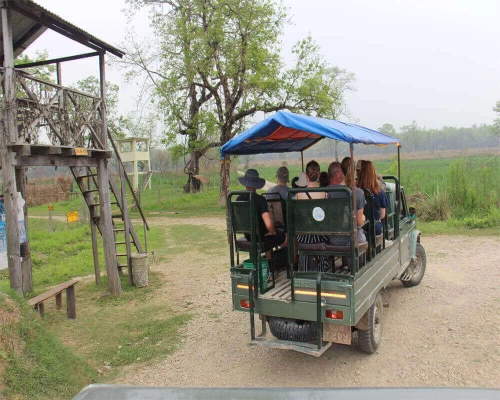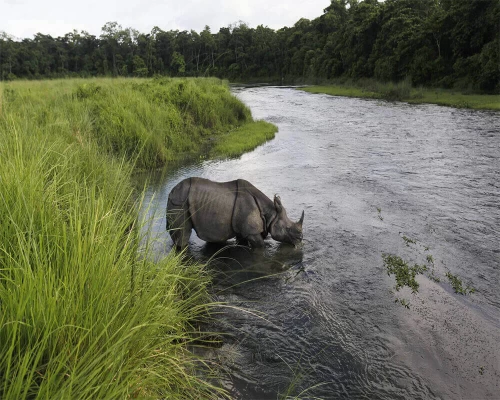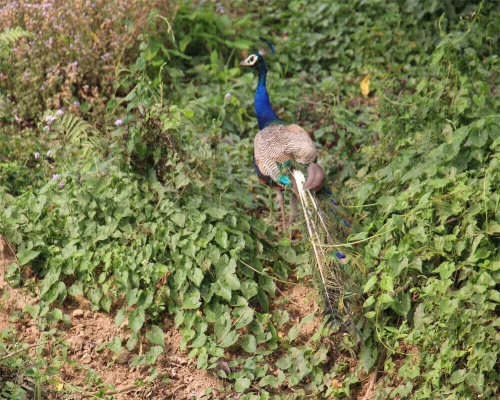Kathmandu Chitwan Tour Package 6 Days Itinerary and Cost 2025
Nepal is a land of extreme contrasts in climate and geography, It has a unique topography ranging from lowlands with sub-tropical jungles to arctic conditions in the Himalayan highlands. Within a mere 150 kilometers the land rises from near sea level in the south to over 8000 meters in the North. This, together with the monsoon rainfall along the south facing slopes, has resulted in compacting virtually all climate zones found on planet Earth. As a result, Nepal has been endowed with a great diversity of life-zones providing a home for a large variety of plants, birds and animals.
The Terai lowlands are defined by a belt of well-watered floodplains stretching from the Indian border northward to the first slopes of the Bhabhar and the Siwalik Range. This is the richest habitat in the land with tall grasslands interspersed with riverine and hardwood sal forest . Here one can see wildlife such as the swamp deer, musk deer, black buck, blue bull, the royal Bengal tiger, gharial and marsh mugger crocodile and the last of a breed of Asiatic wild buffalo. This area is also rich in birdlife with a variety of babbles and orioles, koels and drongos, peacocks and floricans, and a multitude of wintering wildfowl. There are five protected areas in Nepal - Koshi Tappu and Parsa in the east, Sukla Phanta and Dhorpatan for hunting in the west and Shivapuri in the. mid-mountain region. The Churia, also known as the. siwalik, is the southern most range of the Himalaya. No where do they rise above 1,220 meters, This range is famous for fossil deposits of Pleistocene mammals, among them 10 species of elephants, 6 rhinoceros, hippopotamus, saber-toothed cats, various antelopes and primates such as the orang-utan, long extinct in the subcontinent, Situated north of the Churia are broad, low valleys of the inner Terai know as the Doons. These valleys are not unlike the outer plains with tall elephant grass, swamps and ox-bow lakes where the last of the one-horned rhinoceros survive.
Royal Chitwan National Park in the Inner Terai of central Nepal is the first and best protected area in the kingdom. Once one of the most famous big game hunting areas in Asia. Chitwan now offers protection to a large array of mammals such as the. one-horned rhinoceros, tiger, leopard, sloth bear and the gaur (wild bison) as well as more than 400 species of birds....More On Requst Thankyou.
Kathmandu Tour in Autumn Season (Sept – Nov)
Autumn in Nepal is a captivating and cherished time for a Kathmandu tour, and it is often considered the best season to explore the country's rich heritage and traditions. Autumn brings stable weather and clear skies, providing an ideal setting for cultural immersion. The daytime temperatures are moderate and comfortable. As the sun sets, the nights become cooler. The landscapes during this season are at their most picturesque, with lush greenery and the majestic Himalayan peaks in full view. Autumn is also a time for celebration, as Nepal hosts a plethora of cultural festivals, including Dashain and Tihar, adding a vibrant and festive atmosphere to the journey. These festivals provide an excellent opportunity to witness traditional rituals, music, dance, and vibrant cultural displays. As the air becomes crisp and the skies clear, the stunning mountain vistas create a breathtaking backdrop for exploring ancient temples, monasteries, and historical sites.
Kathmandu Tour in Winter Season (Dec- Feb)
Winter season brings cooler temperatures and clear skies, providing a serene backdrop for exploring the country's rich cultural heritage. During the day, temperatures range from 10°C to 20°C (50°F to 68°F), creating pleasant and comfortable conditions for sightseeing and cultural exploration. However, as the sun sets, the nights can become chilly, with temperatures dropping to an average of 0°C to 5°C (32°F to 41°F). In the higher elevations and mountain regions, the cold can be more intense, making it necessary to pack warm and insulated clothing. Despite the cold, the winter months offer unobstructed views of the snow-capped peaks, adding a majestic charm to the cultural journey. The calm atmosphere and clear vistas create a sense of peace and solitude, allowing travelers to immerse themselves fully in the rich traditions, festivals, and historic sites of Nepal.
Kathmandu Tour in Spring Season (March- May)
Spring in Nepal is a vibrant and enchanting time for a Kathmandu tour. This season brings a burst of colors and natural beauty to the country. The weather during spring is mild and pleasant, with daytime temperatures creating a comfortable ambiance for exploring Nepal's cultural treasures. The hills and valleys come alive with the blossoming of rhododendrons, magnolias, and various wildflowers, painting the landscapes with hues of red, pink, and white. This abundance of colors provides a picturesque backdrop for visiting ancient temples, palaces, and historical sites in cities. As the sun sets, the temperatures drop to a cool offering pleasant evenings for experiencing cultural festivals and performances. Spring also marks the celebration of festivals like Holi, the festival of colors, adding a joyous and festive atmosphere to the cultural journey.
Kathmandu Tour in Monsoon Season (Jun - Aug)
The summer season is also known as the monsoon season in Nepal. It can be hot and humid in the lowland areas, including cities like Kathmandu and Pokhara. The hills and mountains become lush and green due to the frequent rainfall. While this time is considered the off-peak season for tourism due to occasional rainfall and landslides. The rain-washed cities and historical monuments exude a sense of freshness and tranquility, inviting visitors to uncover the rich history and traditions of Nepal. While some trekking routes may be affected by the rains, cultural sites like ancient temples, palaces, and monasteries remain accessible, offering an intimate and crowd-free experience. The monsoon season also marks the celebration of various festivals, such as Gai Jatra and Krishna Janmashtami, adding a cultural vibrancy to the journey.
Important Notes During 3 Days Kathmandu Tour Package
- While booking, we need the photocopy of your passport and you have to pay us a minimum of 10% payment of the total cost as advance.
- Nepal has a rich cultural heritage, and it's crucial to respect local customs and traditions. Dress modestly, especially when visiting religious sites, and remove your shoes before entering temples and monasteries.
- Always seek permission before taking photographs of people, especially in rural areas. Some locals may not be comfortable with photography, so it's essential to respect their privacy.
- Beverages, snacks, are not included in our packages, so you have to pay additional cash.
- You should have comprehensive travel insurance that covers tour activities including medical expenses and emergency evacuation.
- Carry a reusable water bottle and use water purification tablets like iodine, aquatabs tablets.
- Pack your clothes according to the seasonal basis.
- Carry enough Nepalese rupees for your trip, as not all places may accept credit cards.
- We suggest you not to book your international flights early as there may be sudden change in weather which will make your flights delay or even cancel.
- Be conscious of your environmental impact and practice responsible tourism. Dispose of waste properly, minimize plastic usage, and support local businesses and communities.

